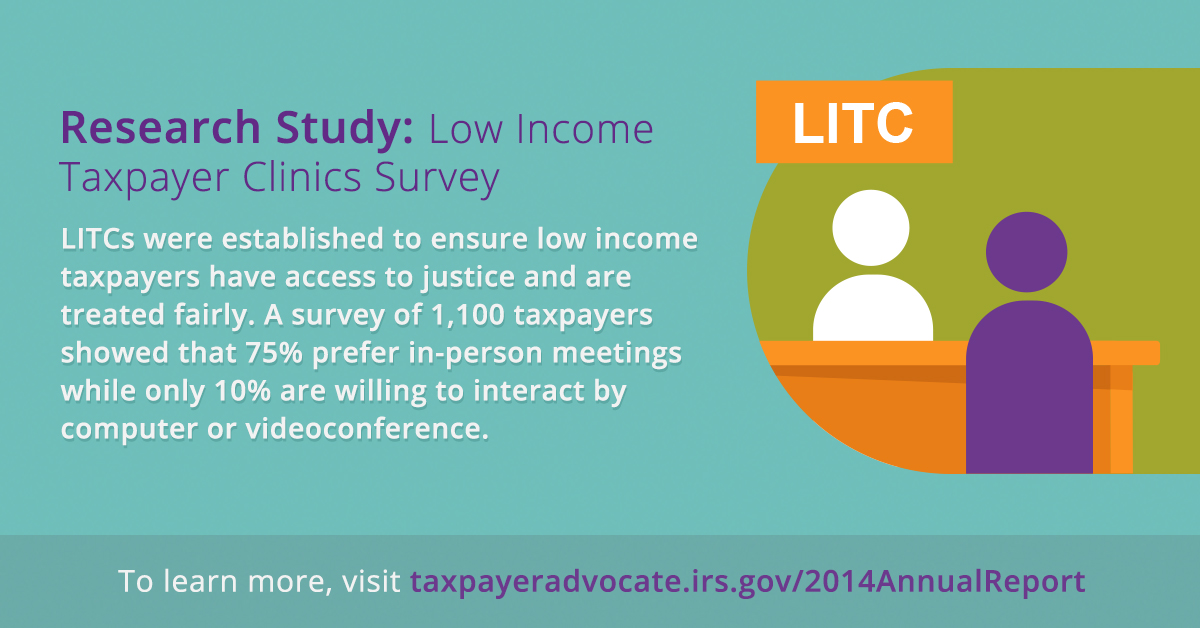
The Low Income Taxpayer Clinic (LITC) Program provides tax representation or advice to low income individuals who need help resolving issues with their federal income tax returns. Low Income Taxpayer Clinics were established to assure that low income taxpayers have access to justice and are treated fairly.
This study was developed with the goal of learning more about taxpayers who are eligible for help from LITCs — a phone survey of more than 1,100 individuals gathered information on eligible taxpayers’ awareness and use of LITC services, the types of issues for which they would consider using clinics, demographic information, and other items. The survey, which used both landline and cell phone numbers, is representative of the low income population, defined by household income at or below 250% of the poverty level, as well as Spanish speakers of this population.
KEY FINDINGS
•LITC Awareness: About half of all LITC-eligible taxpayers hired a tax preparer to complete their federal tax return.
•LITC Awareness: About 30% of all eligible taxpayers were aware of an organization outside the IRS that helps taxpayers with IRS problems. Among the aware, only about 10% knew the name of the organization is “Low Income Taxpayer Clinic.”
•LITC Use: About 2 out of 3 LITC eligible taxpayers stated they were likely or very likely to use an LITC if they had a need for its services.
•LITC Interactions: Participants indicated they were willing to travel 20-30 minutes to a clinic. In-person meetings and meetings at a community services center were preferred by over 75% of all eligibles taxpayers. Only about 10% were willing to interact by computer or videoconference.
•Language: More than 90% of all respondents stated they prefer to discuss their taxes in English, compared to about 20% of Spanish speakers. Over 75% of Spanish Speakers report that they prefer speaking Spanish during tax discussions.
•Education: A majority of all eligibles have some college experience. There are differences in this measure by total vs. Spanish speaking, with Spanish speakers having considerably lower education levels. Specifically, over 30% of Spanish speakers’ highest level of education was less than a high school degree, with 29% reporting only an Elementary school education, compared to less than ten% of the total eligible (only three% reporting just an Elementary school education).
The LITC Survey findings and other studies show that technology adoption and use are not the same across incomes, education levels, age groups, and several other factors. The National Taxpayer Advocate remains concerned that the IRS will make decisions about service that will leave this vulnerable population behind. As the IRS moves away from traditional in-person services such as live telephone assistance or face-to-face interactions at walk-in offices, some groups of taxpayers will be impacted more than others. These types of service reductions increase the value of and the critical need for the clinics’ services among low income taxpayers.